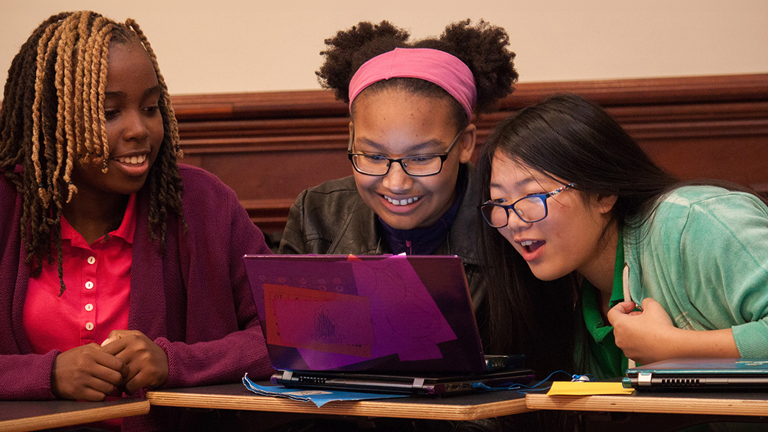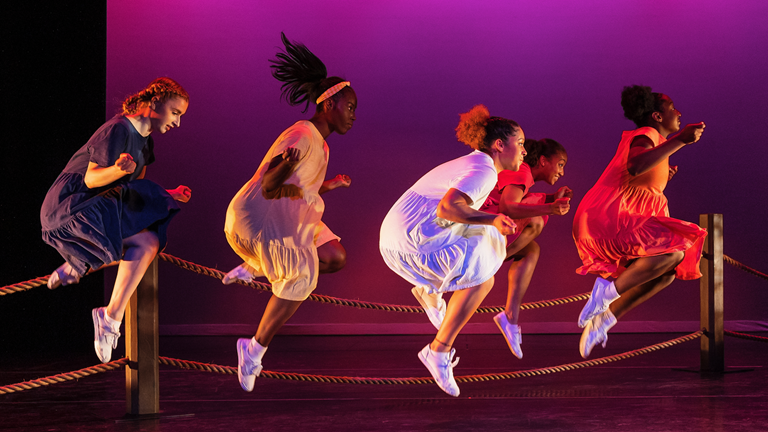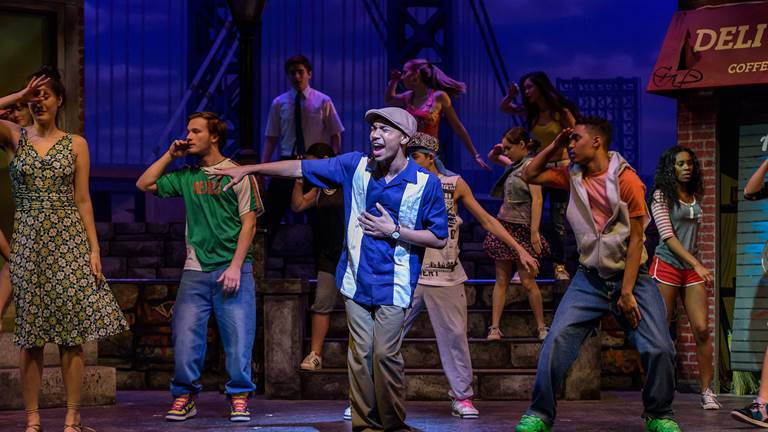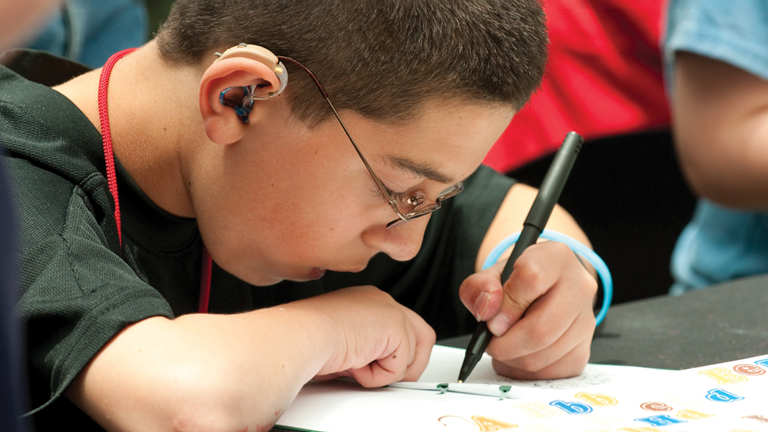Media Meet Author Jason Reynolds
Jason Reynolds was born in Washington, D.C., and grew up in Oxon Hill, Maryland. He wasn’t into reading or writing as a boy, but that changed when he discovered his love for the lyrics and flow of Hip Hop.
LEARNING GUIDE

Take a step in a new direction.
This story was going to begin like all the best stories. With a school bus falling from the sky. But no one saw it happen—they were all too busy. Washington, D.C.-area native, New York Times best-selling author, and Kennedy Center Next 50 leader Jason Reynolds conjures 10 tales (one per block) about what happens after the dismissal bell rings. 10 blocks. 10 unique tales. There’s something for everyone across these 10 vignettes about identity, compassion, fear, and friendship—as told through puppetry, dance, music, projections, audience participation, kamishibai (paper theater), and more. This faithful stage adaptation of Reynolds’ award-winning book (Carnegie Medal, Coretta Scott King Author Honor Book, National Book Award for Young People’s Literature finalist, and more) encourages audiences to look both ways not only when crossing the street, but also when acknowledging the people walking by. This world premiere family play is a co-production with Theater Alliance, adapted by El Chelito and Raymond O. Caldwell, and directed by Caldwell.
Recommended for grades 5-12
Estimated duration is approximately 60 minutes.
See Available Tour Dates & Locations
Event image by Jen Clements.
Step into the captivating world of Look Both Ways: A Tale Told in Ten Blocks with thought-provoking questions, compelling interviews, engaging activities, and exclusive behind-the-scenes insights. Whether you’re a curious Gen Zer, an adventurous adult, a student hungry for knowledge, or an educator looking to inspire, this guide has got you covered.
Common Core Standards
(Social and Emotional Learning)
Performance
Performers
Sound
Lighting
Audience Interaction
What to Bring
 Note from the Director
Note from the Director
Read a special message from the director, Raymond O. Caldwell, about the genesis of the idea to adapt the book for the stage.
Photo by C. Stanley Photography.
What to Look and Listen for:
Think About and Discuss:
Map it Out
![]() The streets around Latimer Middle School play a significant role in the story of Look Both Ways. Now, it is your turn to map out and share your afterschool travels.
The streets around Latimer Middle School play a significant role in the story of Look Both Ways. Now, it is your turn to map out and share your afterschool travels.
Tale Trek
![]() The play Look Both Ways dramatizes ten different perspectives of the walk home from school. Now, it’s your turn to share yours and become a storyteller!
The play Look Both Ways dramatizes ten different perspectives of the walk home from school. Now, it’s your turn to share yours and become a storyteller!
Verse Vibe
![]() Showcase your unique journey by creating an “I am” poem about your afterschool adventure. Write your own “I am” poem to share using this framework:
Showcase your unique journey by creating an “I am” poem about your afterschool adventure. Write your own “I am” poem to share using this framework:
You can share your poem with us on Instagram using @kennedycentertya (#LookBothWaysKC), with your family, or have students perform them as part of an in-class poetry slam.
For inspiration, check out slamKC, Poetry Out Loud, and How to Perform Spoken Word in the Kennedy Center Digital Resources Library.

Jason Reynolds
Explore the magic of bringing literature to the stage with a glimpse into Reynolds’ Look Both Ways and the script adaptation it inspired. The following is an excerpt along with a corresponding scene adapted from the chapter entitled “The Low Cuts Strike Again.”

Photo by Noah Willman.
Pre-Show
Post-Show
Explore the world of projection design with Look Both Ways’ Kelly Colburn and Dylan Uremovich. These innovative creatives are redefining what’s possible with their groundbreaking use of AI technology in projection design. Dylan is a lighting and multimedia designer for live performance, based in Washington, D.C. Kelly is an interdisciplinary artist working as a producer, director, projections designer, and devised performance-maker, also based in the D.C. area. Immerse yourself in the full audio interview (with Fall 2023 TYA Intern Meggie Ferguson) or get the highlights in this captivating Q&A with the artists.
Audio Interview

Dylan Uremovich and Kelly Colburn
Writers: This Learning Guide content was written by Katie Campbell and Jen Clements. Try It Out activities were devised collaboratively by Tamekia Jackson (arts educator and artist) and Cynthia Gertsen. The audio interview and transcript were conducted by Fall 2023 TYA Intern Meggie Ferguson.
Curriculum Specialist: Cynthia Gertsen
Editors: Tiffany A. Bryant, Ellie Pline
Producers: Tiffany A. Bryant, Eric Friedman
Accessibility Consultant: Office of Accessibility
Instagram: @kennedycentertya
Facebook: Kennedy Center Theater for Young Audiences
Hashtag: #LookBothWaysKC
We’re thrilled that you’ve joined us for a performance this season! We would like to hear from your students and you about the experience. After the performance, follow these steps to share feedback:
Each survey will take approximately five minutes to complete. The results will be used to inform future Kennedy Center Education program planning. Thank you in advance for sharing your valuable perspective!
Jason Reynolds was born in Washington, D.C., and grew up in Oxon Hill, Maryland. He wasn’t into reading or writing as a boy, but that changed when he discovered his love for the lyrics and flow of Hip Hop.
Lighting Designer Alberto Segarra describes his work on the world premiere Kennedy Center commission, Earthrise, and how he uses light and color to help establish the physical and emotional world of a play.
Watch and learn as teaching artist TAHIRA performs an original six-word story. Learn how to create a dynamic narrative that pushes beyond words and incorporates storytelling tools like facial expressions, the voice, and body language. You can create an original story in response to TAHIRA’s six-word story guide!
Turn your greatest fear into your greatest inspiration using creative writing. In this video, poet and spoken word artist El’Ja Bowens demonstrates how you can overcome your anxieties through writing stories where you conquer them. Face your fears by transforming them with your creativity and the power of the written word.Â
In this 3-5 lesson, students will analyze how a character's personality traits, actions and motives influence the plot of a story. Students will use their senses to create character sketches, then dramatize the character for an audience.
In this 9-12 lesson, students examine a plot’s function within a story. They will identify and apply elements of a plot — conflict, climax, and resolution. Students will collaboratively write original plot summaries, then individually write original stories using the same plot. They will record and share their plot summaries through audio storytelling.
How do fables and myths explain the unknown and preserve cultures? What makes a good story? How do plays comment on societal issues? Grab a pencil and prepare to create original poems, experience the Civil War through letters, and parse symbolism and metaphor in this exploration of language arts.
Take a peek behind the red curtain and discover the artistry and history behind the world of theater. Explore the playwriting process first-hand, learn about the cultural impact of performance, and read and perform some of the most influential works of the 20th century.
Professional development for educators. Summer intensives for young artists. Teaching artist guided activities. Performances for young audiences. Classroom lesson plans. Arts-focused digital media.
Kennedy Center Education offers a wide array of resources and experiences that inspire, excite, and empower students and young artists, plus the tools and connections to help educators incorporate the arts into classrooms of all types.
Our current teaching and learning priorities include:
A robust collection of articles, videos, and podcasts that allow students of all ages to explore and learn about the arts online.

In-person and virtual performances, along with supporting educational content to help guide learning.

Current approaches to arts integration in the classroom, inclusion, rigor, and adopting an arts integration approach at the school and district level.

An asynchronous online course that invites educators and administrators to think about our students’ disabilities as social and cultural identities that enrich our classrooms and communities.

The Vice President of Education is generously endowed by the
Generous support for educational programs at the Kennedy Center is provided by the U.S. Department of Education.
Gifts and grants to educational programs at the Kennedy Center are provided by The Paul M. Angell Family Foundation; Bank of America; Capital One; The Morris and Gwendolyn Cafritz Foundation; Carnegie Corporation of New York; The Ednah Root Foundation; Harman Family Foundation; William R. Kenan, Jr. Charitable Trust; the Kimsey Endowment; The Kiplinger Foundation; Laird Norton Family Foundation; Lois and Richard England Family Foundation; Dr. Gary Mather and Ms. Christina Co Mather; The Markow Totevy Foundation; Dr. Gerald and Paula McNichols Foundation; The Morningstar Foundation; Myra and Leura Younker Endowment Fund; The Irene Pollin Audience Development and Community Engagement Initiatives;
Prince Charitable Trusts; Dr. Deborah Rose and Dr. Jan A. J. Stolwijk; Rosemary Kennedy Education Fund; The Embassy of the United Arab Emirates; The Victory Foundation; The Volgenau Foundation; Volkswagen Group of America; Jackie Washington; GRoW @ Annenberg and Gregory Annenberg Weingarten and Family; Wells Fargo; and generous contributors to the Abe Fortas Memorial Fund and by a major gift to the fund from the late Carolyn E. Agger, widow of Abe Fortas. Additional support is provided by the National Committee for the Performing Arts..
The content of these programs may have been developed under a grant from the U.S. Department of Education but does not necessarily represent the policy of the U.S. Department of Education. You should not assume endorsement by the federal government.